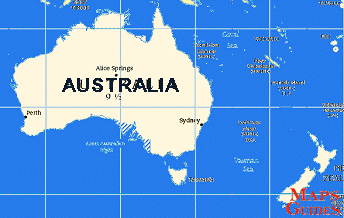In geology and biogeography, Australia (also called Australia-New Guinea, Sahul, Meganesia, Greater Australia, or Australinea) is a continent comprising (in order of size) the Australian mainland, New Guinea, Tasmania, and intervening islands, all of which sit on the same continental shelf. These landmasses are separated by seas overlying the continental shelf — the Arafura Sea and Torres Strait between Australia and New Guinea, and Bass Strait between mainland Australia and Tasmania. When sea levels were lower during the Pleistocene ice age, including the last glacial maximum about 18,000 years ago, the lands formed a single, continuous landmass. During the past ten thousand years, rising sea levels overflowed the lowlands and separated the continent into today's low-lying semi-arid mainland and the two mountainous islands of New Guinea and Tasmania. Geologically, the continent extends to the edge of the continental shelf, so the now-separate lands can still be considered a continent. Due to the spread of flora and fauna across the single Pleistocene landmass, the separate lands have a related biota. New Zealand is not on the same continental shelf and so is not part of the continent of Australia but is part of the submerged continent Zealandia and the wider region known as Oceania or Australasia. Australia is described by the Australian Government Department of Foreign Affairs and Trade as either the world's largest island or the world's smallest continent.
WikipediaIf it is available then we publish here information about the territory from CIA factbook. For Australia it is not available.
CIA The World Factbook 




